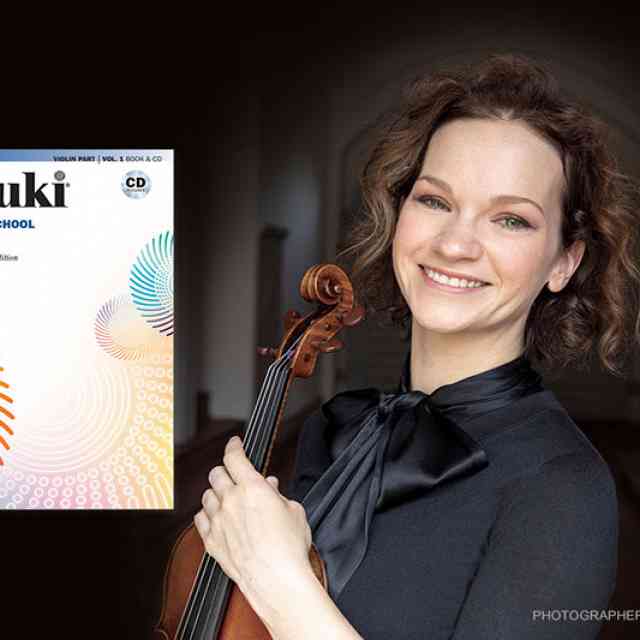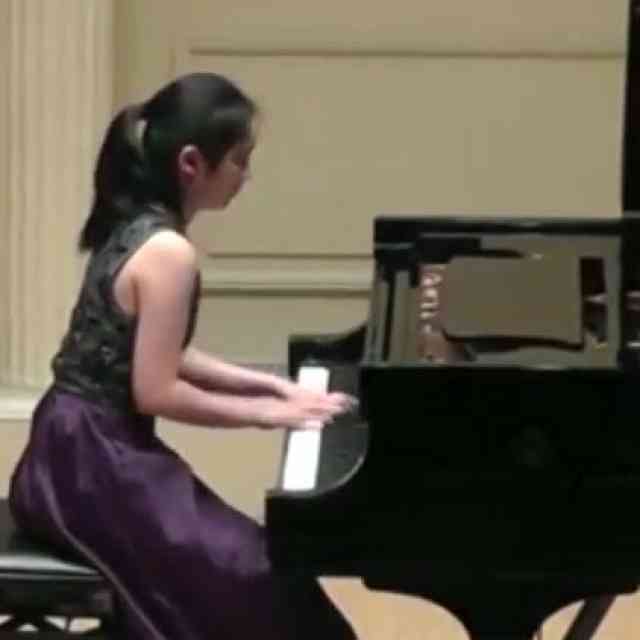I recently came across the remarkable story of two 20th-century pioneers of the Suzuki Piano movement: Ruby Sneed and her daughter Brenda Sneed Harvey. They each deserve to be remembered as exemplars of Dr. Suzuki’s approach to creating a learning community. Foundational to that community is the belief similar to the Nigerian proverb “it takes a village to raise a child”—a concept that may be needed now more than ever to shepherd our children through tumultuous times.
Ruby Sneed was an extraordinary Canadian classical pianist and music educator who also trained teachers across North America and abroad. Her daughter Brenda Sneed Harvey was a Juilliard-trained pianist who became a model for teachers as the Suzuki piano movement began. These visionary women cast a wide net that changed the trajectory of the lives of nearly every teacher and music student they encountered. As women of color facing pervasive racism, the success of their influence is even more remarkable.
Their ancestors were proud people of Oklahoma in search of a Promised Land. During the Land Rush of 1889, Oklahoma was considered an ideal place for African Americans who sought freedom and opportunities for their children. That dream was shattered by Jim Crow Laws implemented as soon as Oklahoma became a state in 1907.
As a result of segregation and domestic terrorism, more than 1,000 Black Oklahoma farmers sold their land and emigrated to Western Canada. Entire Black church congregations would travel together in caravans which culminated in nightly prayer and singing. After their long, arduous journeys, they were met with resistance by the Canadian government. Indeed, Canada did not prove to be the Promised Land. Nevertheless, a limited number of the early migrants managed to stay and establish their own communities based on principles of pride, self-reliance, and education as inspired by Black leaders of the day such as Booker T. Washington and Marcus Garvey.
Ruby Sneed’s parents, Richard Proctor and Estelle Cowan Proctor, were part of that diaspora from Oklahoma to Western Canada. They met each other in Athabasca, Alberta, married, and eventually settled in Edmonton, Alberta, where they raised three daughters. Ruby Sneed was the eldest, born in 1917.
Ruby’s daughter Theresa Lewis, whom I had the honor of interviewing for this article, described her mother’s childhood home as a place where “self-worth was attached to personal accomplishments rather than material things.”[1] Ruby’s parents, both self-taught, wanted to provide for their children the education they were denied. They made sure their daughters were surrounded with whatever cultural interests they were able to provide. Literally by a stroke of luck, the family won an upright piano from a movie theater raffle contest. Ruby took to the instrument with a gifted immediacy and was soon well on her way through the Royal Conservatory correspondence course.
Later, Ruby’s father suffered a stroke and became unable to work. In order to continue supporting the family, her mother started a hand-laundry business that met with considerable commercial success, allowing Ruby to continue her piano studies. Her ability to pay for Ruby’s piano lessons became a source of family pride.[2] Contributing to the community was also at the bedrock of this family’s deeply held spiritual values. Ruby’s mother continued to find ways to help others through hardships by organizing food drives and by collecting monetary donations from local businessmen. Whether it was through the enrichment music or running charities, this family would leave things better than they found them.
Determined to make classical music her career, Ruby moved to Vancouver in 1937 to study music with pre-eminent Canadian pianist and composer Jean Coulthard and with European concert pianist Jan Cherniavsky. Ruby was the first Black woman in Canada to receive an Associate of the Royal Conservatory of Toronto degree (ARCT), and she achieved the highest marks in Western Canada. Ruby was fortunate to continue her higher education in mentorship with European masters as well as being counseled by acclaimed American opera singer Marian Anderson. After further study of the careers of successful female classical musicians, she launched her career performing in public concerts.
At the same time, Ruby arranged music and sang with her sister Eleanor Collins in a Canadian Broadcasting Company radio gospel group called CBC Swing Lo-Quartet Jubilee. Eleanor stayed in broadcasting and developed her own career as one of Canada’s premier jazz vocalists. In 1954 she became the first female and first Black person to host her own weekly television series in Canada. Eleanor, like Ruby, broke many barriers throughout her career and was awarded the Order of Canada at age 95.
In 1940, Ruby married Stanley Sneed. Together they had two daughters: Brenda Sneed Harvey and Theresa Sneed Lewis. Theresa recalled how their home in Vancouver had two grand pianos in the living room, two uprights in the basement studio where their mother taught, that there was always music of the highest quality filling the home, and each day ended as Ruby played beautiful piano works, including Debussy’s Clair de Lune.
Employing various pioneering methods, Ruby concentrated her efforts on teaching piano to children as young as four years old. In 1948, she opened her first studio at the downtown Chinese YMCA where each year she averaged 50 students from diverse cultural backgrounds. Theresa Lewis recounted how her mother studied children and was always looking for new ways to help them be inspired and successful. Ruby realized that music was a language that could be learned by young children in the same way that children first learn to talk. Her students took weekly private lessons as well as group classes. The atmosphere of music lessons with Ruby was one of discipline, play, repetition, and even laughter. She did not believe in scolding children. Instead she played games with them and made up songs for them to sing with accompanying movement, which helped learn the basics of music theory. Also she used the older students to act as class assistants. Ruby believed that as a teacher it was her job to find myriad ways in which to inspire her students to accomplish amazing things. Years later, one of her piano teacher trainees, Koko Yee, would describe Ruby’s rapport with students this way: “Ruby was a dear lady! I was struck at how she was so young at heart in her interactions with the kids.”
Ruby’s fundamental belief in the potential of every student was the key to her success as a teacher. Her studio continued to flourish, and by 1957 she opened a private studio in her home on West 8th Avenue in Vancouver, where she averaged 75 students each year. Ruby maintained a high retention rate. Many of her students studied with her for 10 to 12 years. She also created an apprenticeship teaching program for her students in the last few years of their study with her.
The idea of producing prodigies was the furthest thing from Ruby’s mind. She saw music as a way to enhance the lives of children with beauty and healing. She taught her students that playing beautiful music was a gift back to the community—and just as her parents taught her, it was important to be contributors to the community. Her students earned scholarships, medals, awards, first class honors, and entered professional competitions on a consistent basis. They also tended to do very well in school and many had successful professional careers in other disciplines. Several graduated from conservatories worldwide, including the Paris Conservatory, the Moscow Conservatory, the Brussels Conservatory, the Juilliard School, and the Curtis Institute.
With all of her success, Ruby remained open to new ideas and consistently investigated new avenues of enhancing the learning process of each student. Her inquisitive nature and habitual curiosity peaked with her first observation of Dr. Suzuki in 1964. He and his students were making their first tour in North America. Ruby traveled from Vancouver, B,. to Seattle, Washington, to see and hear Dr. Suzuki’s students live. She was struck by the level of confidence, control, and musicality of the Japanese children. It was very clear to her that Dr. Suzuki employed core principles not unlike her own. This inspired her to pursue further opportunities to observe and adapt Dr. Suzuki’s approach for teaching and learning piano. The whole experience helped shape a new view of what was possible in terms of environment and technique in children’s musical education.
As there was no repertoire for piano at that time (Volumes 1-4 were published in 1970), Martha Stacy, a Suzuki piano teacher trainer and professor, credited Ruby Sneed for implementing the Suzuki philosophy with her own piano repertoire.[3] Ruby also collaborated with Harlow and Elizabeth Mills, sharing teaching ideas about the application of the Suzuki philosophy. Both families frequently visited each other and also hosted workshops, inviting the other to teach and work with their own students.
In 1972, the Community Music School of Greater Vancouver (now Vancouver Academy of Music) awarded Ruby a travel-study grant. This grant enabled her to study with Dr. Suzuki and Dr. Haruko Kataoka and observe the Suzuki Talent Education Method for piano students. Upon her return to Canada, Ruby organized the Canadian Suzuki Piano Program at the Community Music School of Greater Vancouver. Fifty children between the ages of three and five were enrolled.
In 1974 Ruby took a second trip to Japan. This trip served to demonstrate that the program she had implemented had clearly succeeded. Two of her students performed recitals throughout Japan. From that point on, Ruby Sneed became a sought-after lecturer and teacher of masterclasses throughout North America and abroad. She also appeared as a guest on educational TV shows in Canada and the United States.
Among many of the young teachers that she inspired was Caroline Fraser. In 1975 Caroline went to one of Ruby Sneed’s workshops in Palo Alto, California. Caroline and I met one afternoon for an interview on Zoom as she recounted fond memories of that workshop and how Ruby Sneed radically changed her life.
At that workshop, Caroline learned about the Suzuki Piano Method by watching Ruby at work. The idea that all children were capable of excellence if they were given the proper support and encouragement was radical. At that time, most music teachers believed that in terms of talent, you either had it or you didn’t. Ruby Sneed proved to be a model of innovation, persistence, and determination. Caroline explained what she and the other teachers observed was true of Ruby: “Her passion, enthusiasm and belief in all children—and that it was our [teachers’] responsibility to develop it [talent].” Caroline recounted that Ruby did not articulate this so much as she demonstrated it. She knew beyond a doubt that all children could learn and excel. That enthusiasm sparked other young teachers in the San Francisco Bay Area to continue with her vision.
“Ruby Sneed knew that all children can learn,” Caroline Fraser continued, and added, “All children can learn well!” Caroline went on to say that so much depends on the learning environment. “Their environment is our [teachers’ and parents’] responsibility. It’s very simple.” Then she laughed, and she clarified that, “The implementation is not so simple, but the formula is. Children and their parents know when you do not believe that as a teacher. Everything depends on your belief that they can do it. That everything you present to them at every step, if you know that they can do it, and when they can’t quite do it, you just break it down to something that they can do. And you add to it. You know they will be able to get there. And the child’s learning is quite different. The difference is clear between that kind of a teacher and the one who says, ‘Here’s those that can, and what a pity these can’t do it so well, but oh well, we’ll teach them anyway… How long is the lesson?’ The way the child learns in each of those circumstances is completely different. Ruby got across that message from her heart.”
Caroline was also struck by Ruby Sneed’s ability to inspire teachers to create a musical community. Ruby understood the importance of making everyone feel included and part of something bigger. Having this community helped Caroline as a young teacher. Ruby was able to foster a community of teachers from that workshop in order to transform their teaching. The teachers from that workshop started a Suzuki piano group. They continued to call each other and share ideas. Caroline said that as a young teacher she would not have continued if she did not have the support and camaraderie of the other teachers from that group.
Unfortunately, in 1976 Ruby Sneed suffered an untimely death. Her work continued through her students. Her eldest daughter Brenda, also highly skilled from an early age, began piano instruction with Ruby, completed her formal training at Juilliard, served as an assistant instructor in Ruby’s studio and continued Suzuki Piano instruction when she moved to California. Brenda also competed regularly and was a semi-finalist in the Busoni International Piano Competition.
Brenda was a driving force among the Bay Area Suzuki piano teachers. Caroline Fraser said, “The most striking quality I remember is her [Brenda’s] relentless striving towards the highest of standards. She had the highest of expectations. In a very positive and loving way, she was strict in her demands. And of course with that attitude, how do you think her students played? Her students were absolutely excellent and became examples for all of us beginning level teachers.”
Caroline Fraser’s son started piano lessons with Brenda Harvey in 1977 at the East Bay Performing Arts Center. The East Bay Performing Arts Center was a very diverse community both racially and socioeconomically—similar to Ruby’s studio environment at the Chinese YMCA in Vancouver. Caroline said, “When Brenda walked in, you felt her presence, warm and strong—confidence that came from her excellent preparation.”
Koko Yee, another Bay Area Suzuki piano teacher, said, “I remember being in awe of Brenda, as she knew how to motivate the students to get those results.”
Brenda Harvey was highly respected in the Suzuki community for her teaching and performance ability. She held workshops alongside Dr. Suzuki in Edmonton. She performed “The Mephisto Waltz” by Frank Liszt at the Seventh International Suzuki Conference in Edmonton, August 1985, at the request of Dr. Haruko Kataoka. Gwen McKeithen, a former piano teacher at Dominican College, said Brenda made it “look as easy as ‘Chopsticks.’”
Brenda also produced the film “=Nurturing Children through Music about the Suzuki Piano Method. This film is available in the SAA lending library, and it is for parents, teachers, and educators. It received a Merit Award from AMTEC in 1985. Brenda stayed active as a teacher in a variety of roles: she was appointed head of the Suzuki Piano Department of Music at Mount Royal College, Calgary, and she served on faculties at Bennett College, Juilliard, and San Francisco State.
Brenda’s life tragically ended in 1986. Colleague and friend Marge Patipatanakoon said Brenda was “truly beloved by all of the parents and students.” Dr. Kataoka, the co-founder of the Suzuki Method for piano, composed a song in her honor. Dorothy Jones wrote a tribute to her in the American Suzuki Journal.
Ruby Sneed and Brenda Harvey had the persistence to keep going despite challenges because of an unwavering level of faith in their work. The strength of persistence was part of their family legacy to keep moving from place to place in search of a promised land where their children would have opportunities.Their stories remind us of the importance of having teachers of color involved in the Suzuki movement. They were able to bring a diversity that authenticates and propels the sustaining inclusivity of Dr. Suzuki’s vision and mission. Not just some, but all children deserve to benefit from the gift of music.
Ruby Sneed and Brenda Harvey not only educated, trained, and inspired young people with music; they educated, trained, and inspired teachers with the conviction that children have the capacity and the need to learn and that the measure of education’s success is creating a vibrant, inclusive, and just community. These pioneers exuded warmth and demanded excellence. We should all continue their legacy with the persistence to build communities and encourage children to reach their fullest potential.
Each of us benefits from having a larger music community rather than trying to do it on our own. As Ruby Sneed and Brenda Harvey demonstrated, interacting positively with people can have long-lasting results. Caroline Fraser said, “Transforming one life can change an entire community—and for generations to come. It is this single-minded, positive spirit, faith and focus which Dr. Suzuki instilled in us, which will guide us to change the world. I will always remember he would say, ‘One person at a time.’ And one person can make a tremendous difference.” Caroline continued by saying, “Dr. Suzuki said, ‘Working together, we can change the world.’ I like to say, ‘Working together, we are changing the world.’” As it takes a village to raise children to become future leaders, we must always remember that the village includes people that came before us. Thank you, Ruby Sneed and Brenda Harvey for your example and inspiration!
Notes
[1]. Theresa Lewis, “Ruby Evelyn (Proctor) Sneed—A Patchwork Quilt: Passing on a Dream,” 188.
[2]. Ibid., 189.
[3]. Martha Stacy, “History of the Suzuki Piano School in America,” American Suzuki Journal, Fall 1988, 20.










